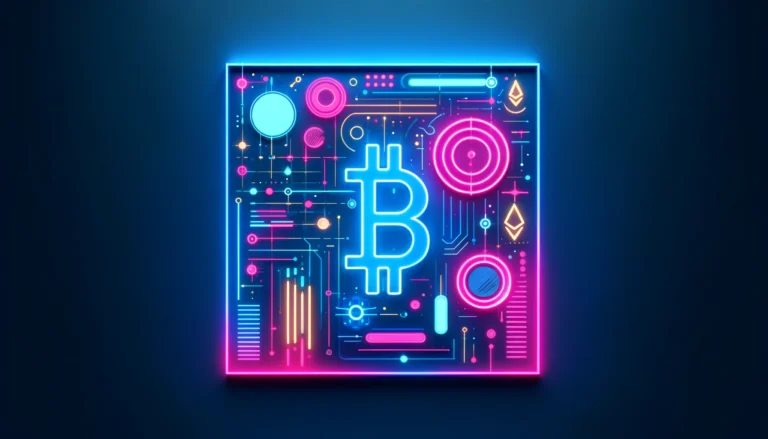Unlocking the Power of Blockchain for DApps
In the rapidly evolving digital landscape, blockchain technology and decentralized applications (DApps) stand out as significant innovations that are reshaping how we interact with digital services. The integration of blockchain into DApps not only enhances their functionality but also introduces a new paradigm of user autonomy and security. This article delves into the intricacies of blockchain technology, explores its benefits for DApps, addresses the challenges faced, and forecasts future trends in the integration of both technologies.
What is Blockchain and How Does it Work?
Blockchain is a distributed ledger technology that maintains a secure and immutable record of transactions across a network of computers. This technology ensures that each transaction is encrypted and linked to the previous one, forming a chain of blocks—hence the name blockchain. It operates on a consensus mechanism that allows the network to agree on the validity of transactions without the need for a central authority, which enhances transparency and trust among participants.
The core feature of blockchain is its decentralization. Data on the blockchain is not stored in any single location, making it highly resistant to censorship and fraud. Each node (or computer) on the network has a copy of the ledger, and transactions are visible to all participants, fostering a high level of transparency. Furthermore, blockchain uses cryptographic techniques to secure data, ensuring that once a transaction is recorded, it cannot be altered, thereby safeguarding data integrity.
Blockchain networks can be either public, private, or consortium based. Public blockchains like Bitcoin and Ethereum are entirely open, allowing anyone to join and participate in the network activities. Private blockchains, on the other hand, restrict the access to a certain group of users, offering more control over the network. Consortium blockchains are a hybrid, controlled by a group of organizations, which makes them ideal for business collaborations.
Key Benefits of Blockchain for DApps
One of the primary benefits of using blockchain for DApps is enhanced security. By decentralizing the storage of data, blockchain ensures that no single point of failure can compromise the application’s integrity. This is particularly crucial for applications handling sensitive or financial information, where security breaches can have devastating consequences. Additionally, the cryptographic audit trails inherent in blockchain provide an added layer of security and accountability.
Another significant advantage is the increased transparency and trust blockchain brings to DApps. Users can verify transactions independently and see the full history of actions without relying on a trusted third party. This not only reduces the potential for fraud but also builds user confidence in the platform. Blockchain also enables DApps to operate in a trustless environment, where transactions and interactions are governed by immutable smart contracts that execute automatically based on predefined rules.
Lastly, blockchain facilitates improved scalability and efficiency in DApps. Traditional centralized databases can become bottlenecks as application usage grows, but blockchain allows for distributed data management, which can handle increased load by adding more nodes to the network. This scalability is crucial for DApps aimed at a larger audience, ensuring they remain efficient and responsive as they grow.
Challenges Faced by DApps Using Blockchain
Despite its advantages, integrating blockchain with DApps comes with its set of challenges. The most prominent issue is scalability. Public blockchains, like Ethereum, often suffer from network congestion, leading to slow transaction times and high fees. These performance issues can significantly detract from the user experience and limit the practical usability of DApps for mainstream applications.
Interoperability is another major challenge. Many blockchains operate as closed ecosystems, and DApps built on these platforms may not interact seamlessly with those on other blockchains. This can limit the functionality and reach of DApps, confining them within the boundaries of a single blockchain. Efforts are ongoing to develop interoperability solutions, but these are still in their early stages.
Moreover, the complexity of blockchain technology poses a significant barrier to entry. Developing DApps requires a deep understanding of both the underlying blockchain platform and smart contract programming. This can restrict the pool of developers capable of creating DApps and slow down the innovation process, as businesses may be hesitant to invest in a technology that is complex and difficult to implement.
Future Trends in Blockchain and DApps Integration
Looking ahead, the integration of blockchain and DApps is expected to evolve significantly. As blockchain technology matures, enhancements in scalability and interoperability are anticipated. Layer 2 solutions like state channels and sidechains will likely gain traction, providing DApps with the means to operate more efficiently and at a larger scale while still leveraging the security of the main blockchain.
The advent of cross-chain technology will also play a crucial role in the future of DApps. This technology will enable DApps on different blockchain platforms to communicate and transact with each other seamlessly, leading to a more interconnected and functional ecosystem. This interoperability will expand the scope and utility of DApps, allowing for more complex and integrated applications.
Additionally, as more industries recognize the potential benefits of blockchain, there is likely to be an increase in sector-specific DApps. These applications will target particular industry pain points, such as supply chain transparency, secure medical records management, and decentralized financial services, further driving the adoption and development of blockchain technology.
The symbiotic relationship between blockchain and DApps holds immense potential to revolutionize various sectors by offering decentralized solutions that prioritize security, transparency, and user control. While there are challenges to be addressed, the ongoing advancements in technology and growing interest across industries suggest a promising future for their integration. As we move forward, the evolution of these technologies will undoubtedly unlock new possibilities and redefine the digital landscape.



